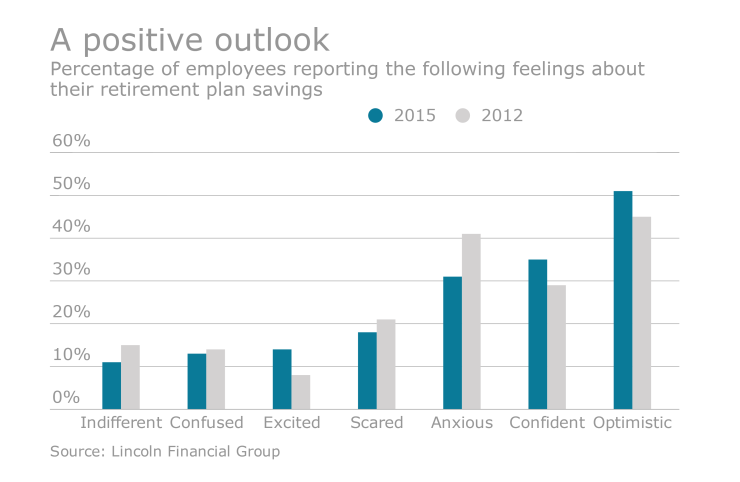The number of new cash balance plans grew by 17% in 2015, while the number of new 401(k) plans only went up by 3%, according to Kravitz, an Ascensus company.
Kravitz, a retirement administration firm and cash balance specialist, combs through the latest IRS Form 5500 filings to get its data. For the most recent year, 2015, it found that 92% of new cash balance plans were at companies with fewer than 100 employees. It also found that market volatility and uncertainty over tax rates did not slow down the growth of cash balance plans. Between 2010 and 2015, there was a 152% increase in new cash balance plans nationwide.
Cash balance plans are sometimes called hybrid plans because they combine the high contribution limits of a traditional defined benefit plan but have the portability of a defined contribution plan. Like traditional DB plans, cash balance plans only accept contributions from the employer, not employees.

“The investment risk is borne by the employer but they are not subject to 401(k) limits,” says Dan Kravitz, president of Kravitz. “So owners, particularly older owners, can contribute a lot more to a cash balance plan than they can contribute to a 401(k) profit-sharing plan.”
Cash balance plans are a way to reduce tax liability and increase retirement savings, he adds.
The 401(k) contribution limit is $18,000 a year or $24,000 annually for those over age 50. The match through profit-sharing can get close to $60,000 for those over age 50 and $54,000 for those under 50.
“It works well for most people. Medical groups, law firms and professional services companies are looking for ways to increase the amount they can contribute to qualified plans, so cash balance plans, the way those work, we find our clients can double, triple or quadruple plan contributions by adding a cash balance plan to an existing 401(k) profit-sharing plan to enhance their retirement program,” Kravitz says.
Cash balance plans now make up 34% of all defined benefit plans, up from 2.9% in 2001.
“The rising popularity of cash balance plans has coincided with a steady decline in traditional defined benefit plans due to ongoing challenges with risk and cost volatility,” according to the report. And while it used to be medical practices and law firms that made up the bulk of cash balance plans, these plans are now quite popular in many business sectors, including retail, technology and manufacturing.
Companies that add on a cash balance plan tend to pay more than 6% of payroll in contributions to rank and file employees, which is double the 3% average 401(k) profit sharing pays. Because high earners are allowed to sock away a lot more money through a cash balance plan, plan sponsors have to comply with IRS non-discrimination testing rules, meaning that for every contribution they make to their executives’ accounts, they also need to give a 5% to 8% of pay contribution to their rank and file employees.
Kravitz points out that from an economic standpoint the tax savings of hosting a cash balance plan far exceeds the additional cost of sponsoring the plan.
When taxes are high, it makes sense for employers to find ways to set as much money as they can aside tax-deferred, he says. The hope is that taxes will eventually go down when it is time to begin withdrawing that money.
Cash balance plans have grown quickly because of legislative changes. The first change that had an impact was the Pension Protection Act of 2006, which “clarified IRS approval of the plans, removed any remaining uncertainty about their legal status and introduced other changes that simplified implementation and administration,” the report stated.
Other regulations appeared in 2010 and 2014, which gave “plan sponsors a compliance roadmap and greater investment flexibility, including the option to use fixed rates up to 6% and to include multiple investment options within a single cash balance plan,” Kravitz found.





